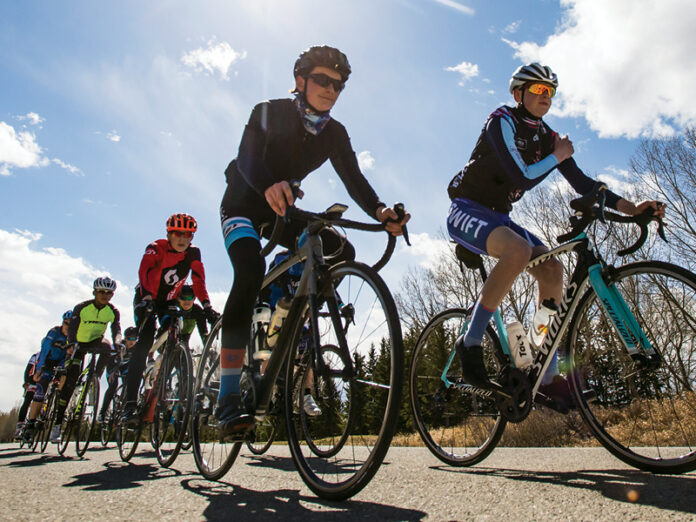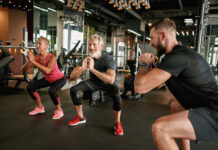
Cycling can bring you joy and pain, very often together in the same ride. A big milestone is riding 100 kilometres in one go, but training to ride 100K solo is very different from training to race, or participate in, a gran fondo.
Regardless of your summer cycling goal, there are a few things to consider before rolling out the big miles. First, know your comfort level on a bike and be honest about your cycling background. Cycling is a non-weight bearing activity, so most people find it easy to progress. Be ready for more than simply following a training program to achieve 100K in eight weeks. Here are six areas to build your cycling experience:
-
- Safety: Be smart when training and never push yourself beyond your limits; there is no place for stupidity on the bike. I tell my athletes the ultimate goal of the ride is to get home safely and give your mom a big kiss on the cheek! There are approximately 7,500 serious cycling injuries per year, so avoid being a statistic. Always wear a helmet, be extra careful at intersections and avoid riding during afternoon rush hour or in low light. Be aware of your surroundings at all times, save the headphones for the gym and use rear blinking lights at all times.
- Mental Preparation: Success may depend on more than fitness. What if it’s raining, windy or sleeting? How will you challenge yourself to complete this goal in unexpected or uncontrolled circumstances? Mental training is needed, too. Stick with the plan! Know your goal and don’t let outside sources influence you on the day to change the steps you’ve created to be successful.
- Tactics: Drafting saves 30 per cent of energy by having someone else block the wind in front of you. This is why the yellow jersey rider is always behind a teammate. Incorporate training days with other trusted riders and practice drafting in controlled situations. First, ride a steady distance from the rear wheel of the rider directly in front of you, but do not overlap wheels. Get comfortable with this distance. Try a wheel’s distance apart, then try half a wheel. It will take time and focus. You must be mindful of the person trying to get the draft behind you. Once you master this you can start riding in a pace line.
- The Peloton: You can also get energy saving effects and cover greater distances faster from riding in a pack, or peloton. The peloton is a bit like driving in South America: it seems chaotic at first, but there is a flow, once you get comfortable. Use predictable, smooth and subtle movements to close gaps and move forward through the group — nothing erratic that causes people to react suddenly.
- Nutrition: Use training days to sort out what your body needs as fuel to maintain the energy you are expending. There are many sport nutrition products on the market, but commercial bars can be boring. What natural sources can give you the energy you need? I carry cooked sweet potato in a ziplock bag. Experiment and find out what works for you.
- Equipment: I remember racing in Cuba in the ’90s, and noticed my competitor riding a 1970s Cinelli, wearing handmade cycling shoes. Her gear didn’t deter her motivation to kick my butt! Funny how people make do with what they have. A modern carbon fibre bicycle will make a difference, but this doesn’t mean you can’t enjoy riding with what you have in your garage. Your bike should be running smoothly: inspect the wheels and drive chain; make sure rims are true; replace worn tires and brake pads; grease and maintain a smooth drive chain. Investing in a pair of cycling shorts and a good saddle is worth its weight in gold.
Derailleur Dictionary
Cycling terms you need to know.
- Cadence: RPM or revolutions per minute. Optimal cadence is your most efficient RPM. For most this is 80-90 RPM.
- Out of the saddle: You would ride out of the saddle on a steep climb, accelerating to a higher speed or just stretching the legs after too long at the the same sitting tempo.
- Drafting: The riders behind a lead rider are drafting and save energy due to less wind.
- Controlled braking: Applying the right amount of pressure to front and rear brakes to control your bike.
- Aero position: Riding in a tuck or low profile position to reduce surface area that catches wind.
- Hand position: When riding at a high speed or descending, your hand position is in the drops and closest to the brakes. For longer distances, alternate positions to relieve hand numbing.















